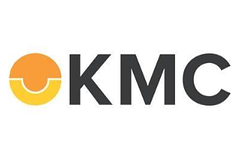
Int-2158491 | Talent Acquisition Manager
KMC SolutionsThe Talent Acquisition Manager will lead the recruitment team, driving innovation and process improvement to attract top talent. This role involves strategic planning, project management, and enhancing the employer brand. The manager will also be responsible for overseeing the entire recruitment lifecycle, from candidate profiling, to contract creation and offer negotiations, ensuring a positive client and candidate experience. In addition, the scope of this role extends beyond traditional recruitment activities; it encompasses developing and implementing strategies to upskill and enhance the performance of recruiters under your purview.
The main responsibilities of a TALENT ACQUISITION MANAGER - LAUNCH include:
1. Leadership Function:
- Manage and mentor a team of talent acquisition leaders, providing guidance, support, and performance feedback to ensure the team's success.
- Set clear performance expectations and goals for talent acquisition team. Conduct regular performance evaluations, provide feedback, and recognize high performers. Address performance issues promptly, implementing corrective actions and performance improvement plans when necessary.
- Implement quality assurance measures to monitor the team's performance and ensure compliance with established processes and service levels. Conduct regular audits, reviews, and feedback sessions to identify areas for improvement and provide coaching and guidance.
- Ensure adherence to standardized recruitment processes and procedures by providing clear guidance, training, and ongoing support to team members. Monitor and assess team members' compliance with established processes, identify areas for improvement, and implement corrective measures as necessary.
- Assist with recruitment efforts for senior-level positions.
2. Stakeholder Management:
- Build and maintain strong, trusted relationships with clients, serving as the initial escalation point for all talent acquisition-related matters within his/her team.
- Understand their business objectives, recruitment needs, and long-term talent strategies to provide tailored solutions and exceptional service.
- Provide strategic guidance to clients on talent acquisition best practices, market trends, and innovative recruitment strategies. Proactively identify opportunities to add value and address client hiring challenges to drive client satisfaction.
3. Client Escalation Management:
- Act as the initial point of contact for client escalations, swiftly addressing and resolving any issues or concerns that arise during the talent acquisition process.
- Ensure sustainability and efficiency of proposed solutions to clients and/or stakeholders while maintaining compliance within the current boundaries of Talent Acquisition.
- Demonstrate active listening and empathy when addressing clients' concerns, collaborating with them to find effective solutions that meet their needs and align with the organization's objectives.
- Conduct thorough investigations of escalated issues, gathering relevant information and engaging cross-functional teams to identify root causes and implement appropriate resolutions.
- Implement corrective actions promptly and develop preventive measures to mitigate the risk of future escalations, continually improving client satisfaction and the overall talent acquisition process.
- Maintain detailed records and documentation of client escalations, including issues, resolutions, and any agreed-upon service level adjustments or changes.
4. Benchmarking and Market Analysis:
- Providing guidance to talent acquisition leaders in conducting in-depth market research and benchmarking exercises to provide clients with valuable insights on industry trends, talent acquisition strategies and practices specific to their hiring requirements. Utilize this knowledge to identify opportunities for improvement and innovation in meeting their unique talent acquisition needs.
- Identify talent shortages or skill gaps in the market and propose alternative strategies to clients, such as reskilling, upskilling, or considering candidates from related industries or backgrounds.
- Evaluate the feasibility of recruiting for specific roles within the existing talent market. Assess factors such as skill availability, competition, talent scarcity, and market demand to provide clients with realistic expectations and recommendations on recruitment strategies.
5. Recruitment Data Analytics:
- Utilize recruitment data and analytics to identify trends, patterns, and insights that drive recruitment strategies and improve decision-making. Analyze key metrics such as source effectiveness, conversion rates, and candidate quality to optimize the recruitment process.
- Generate regular reports and dashboards on recruitment metrics, providing meaningful insights and recommendations to stakeholders.
- Present data-driven insights to senior leadership to support strategic talent acquisition decisions.
6. Project Management:
- Take on the role of project manager for key talent acquisition initiatives, overseeing the planning, execution, and successful completion of recruitment projects. This includes defining project objectives, establishing timelines, allocating resources, coordinating cross-functional teams, monitoring progress, and ensuring deliverables are achieved within scope, budget management, and quality parameters.
- Employ project management methodologies, tools, and best practices to effectively manage project risks, issues, and dependencies, while maintaining clear communication and collaboration with stakeholders throughout the project lifecycle.
7. Talent Acquisition Technology & Trends:
- Stay up to date with the latest recruitment technologies, tools, and trends to optimize the talent acquisition process and enhance efficiency.
- Stay up to date with current and emerging trends in talent acquisition, including sourcing strategies, recruitment technologies, candidate assessment methodologies, diversity and inclusion practices, and employer branding techniques.
8. Process Improvement & Innovation:
- Regularly assess the effectiveness and efficiency of talent acquisition processes, procedures, and workflows. Identify areas for improvement, bottlenecks, and opportunities to streamline operations.
- Collaborate with cross-functional stakeholders to gather feedback, insights, and suggestions for process improvement. Engage in regular communication to ensure alignment and collaboration in implementing process enhancements.
- Identify opportunities for leveraging technology and automation tools to streamline and optimize the talent acquisition process. Evaluate and implement applicant tracking systems, AI-based screening tools, and other relevant HR technologies to enhance efficiency and candidate experience.
- Be able to document process improvements by updating Talent Acquisition process documents while ensuring proper cascade of process updates and that all affected parties are aligned.